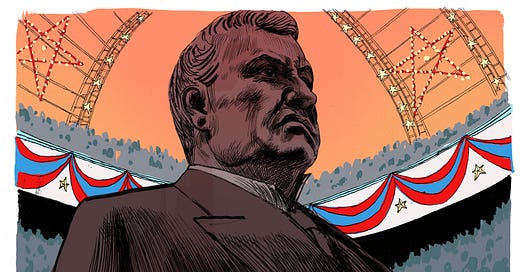This One-Eyed, Insult-Spewing Senator Was the Donald Trump of the 1890s
How a fiery farmer known as “Pitchfork Ben” ravaged his own party, galvanizing angry voters with racist rhetoric — before it all came crashing down.
Illustrations by Matt Rota | Edited by Brendan Spiegel
On a warm morning in July 1896, on the third day of the Democratic National Convention, South Carolina Senator Benjamin Tillman stepped onto the stage of the Chicago Coliseum. After three years of recession, Democratic President Grover Cleveland had declined to run again, and the field was open to a new candidate. Tillman had made a name for himself by savaging Cleveland, calling him a “bag of beef” whom he promised to “prod in his old fat ribs,” and audiences loved him for his fiery candor. As he faced the seas of delegates in front of the stage many called up to him, “Tillman!” and “Pitchfork Ben!” All Pitchfork Ben had to do was carry it a little further, and he had a shot at the presidential nomination. A short, rumpled man in his late forties, he glared at the audience with his one good eye.
Tillman had lost the eye during the Civil War – not in battle, but after contracting a bacterial infection while swimming in a millpond ne…
Keep reading with a 7-day free trial
Subscribe to Narratively to keep reading this post and get 7 days of free access to the full post archives.




